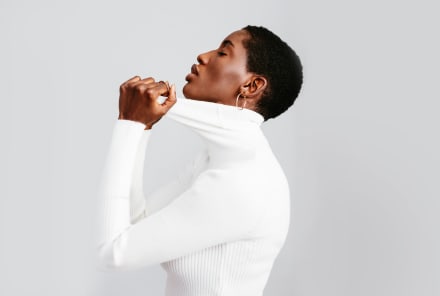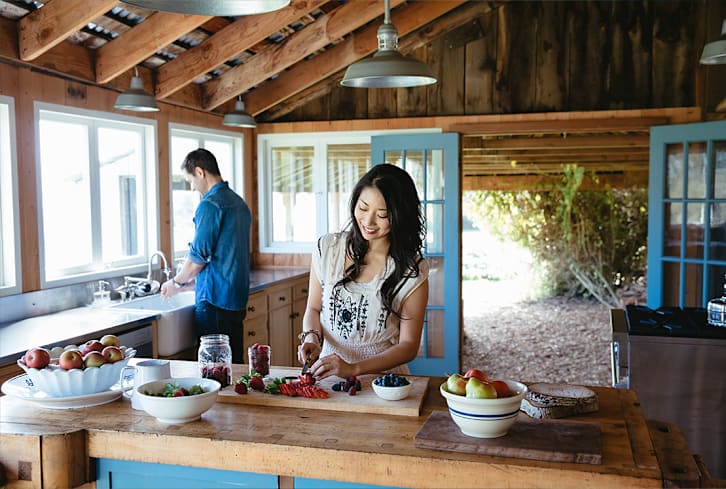Advertisement
The 9 Types Of Boobs & What To Know About Each, From OB/GYNs


Just like every other part of the body, boobs are unique to each individual. Here are some different variations of what a person's boobs might look like in terms of shape, size, nipples, and more, according to OB/GYNs.
What do boobs normally look like?
There's no such thing as a "normal" set of boobs. Everything from the shape and size of the breast itself to the shape, color, and size of the nipples can vary. Pointy, round, tubular, large, small, and pendulous are all common and healthy ways for breasts to look, according to OB/GYNs Suzanne Gilberg-Lenz, M.D., and Wendie Trubow, M.D.
"One myth to bust: Breasts are pretty much never symmetrical in size and shape," Gilberg-Lenz adds. A person might have one boob that's slightly bigger or slightly different in shape from the other.
The nipples can also have a lot of variation from person to person: They can be small and flat, large and protruding, or inverted nipples, she says.
Types of boobs.
Here's how bra company ThirdLove defines nine diverse boob shapes, according to their breast shape dictionary:
Asymmetric
Asymmetric breasts are a set of breasts where one boob is larger than the other boob. Notably, though, most people's boobs are at least somewhat asymmetrical, according to Gilberg-Lenz, though some might be more so than others. "No human is perfectly symmetric—hands, eyes, feet, and boobs."
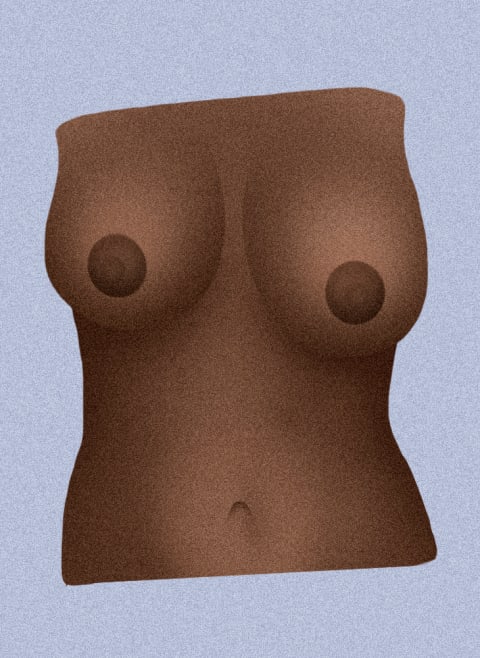
Athletic
These boobs tend to be wider-set, and they contain more muscle and less tissue. (Not all physically active people have this type of boobs though, despite the name.)

Bell
With bell breasts, the breasts are shaped like, well, a bell. They're thinner at the top and fuller at the bottom, forming a bell shape. This shape is common among women with larger cup sizes, and they may commonly deal with a lot of "overflow" with some bra types.
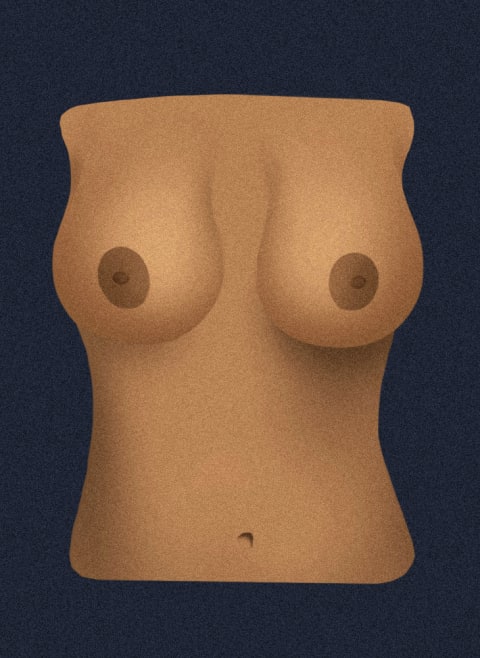
East-West
East-West breasts are wide-set, leaving a space in the middle of the chest. The breasts themselves, as well as the nipples, will point outward in opposite directions.
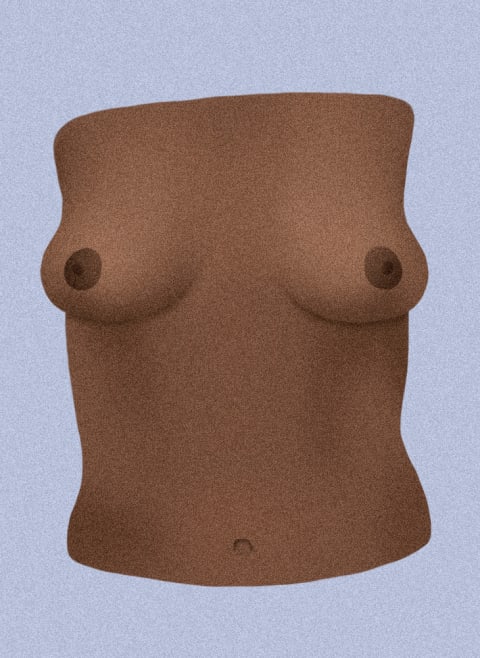
Relaxed
This type of breast tends to hang longer, and the tissue is more relaxed than perky. The nipples will point downward.
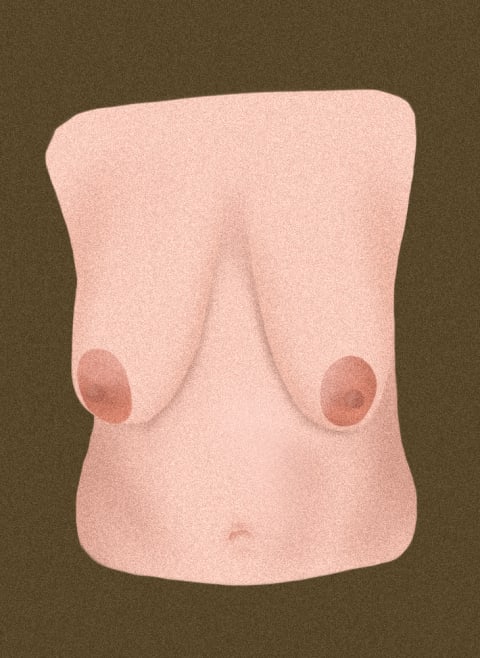
Round
Round boobs are symmetrical all around, meaning they're equally full on the top and the bottom. They generally don't need much support.

Side Set
Side set breasts can easily be confused with East-West, since they're both wider-set with a space in the middle. However, in this case, the nipples will be pointing more forward, and the breasts are rounder or more full-shaped.
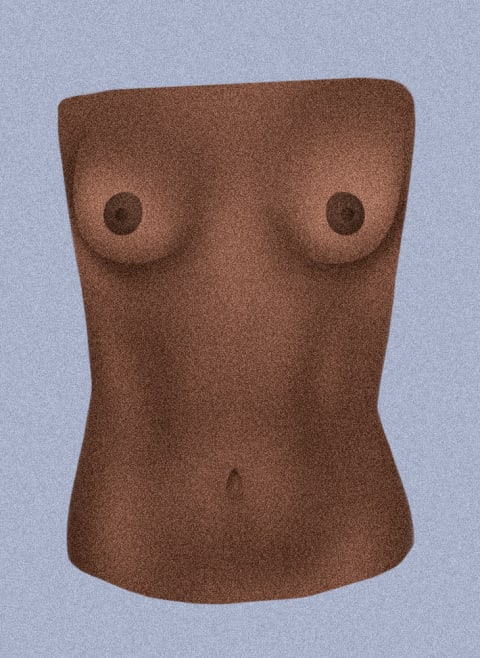
Slender
Slender breasts are more oval-shaped than round. They tend to be thin and long and generally smaller in size. The nipples usually point downward.
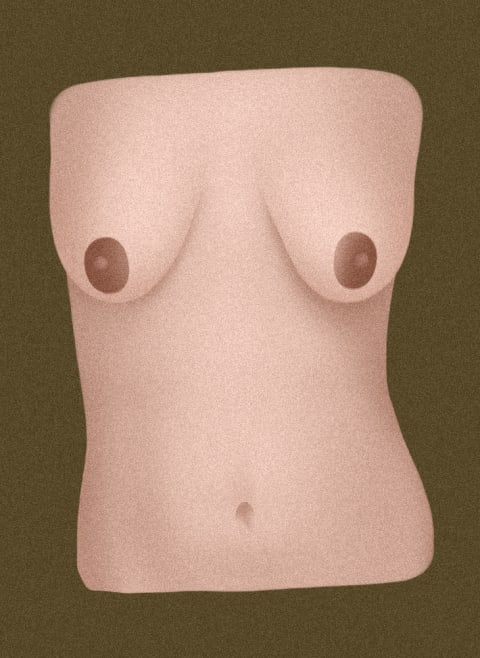
Teardrop
These breasts are a mix between round boobs and bell-shaped boobs. They tend to be slimmer on the top than round boobs, but they are round and full on the bottom.
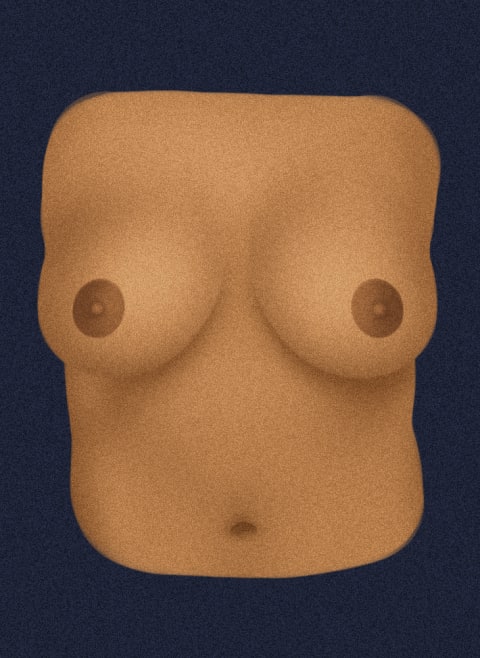
The benefits of getting to know your boobs.
Becoming familiar with your boobs will not only make it easier to find a comfortable, supportive bra, but it can also build confidence and increase overall mental health. Comparing the body you have to the bodies seen on social media, TV, or even in bra advertisements, can lead to comparison and unhealthy expectations.
"Body image is linked to physical and mental health," Gilberg-Lenz says. "Eating disorders, mood disorders, and substance abuse have been linked specifically, in research, to the consumption of social media and negative feelings about looks, weight, and self-image."
Understanding that boobs and nipples come in a diverse range of sizes and shapes reminds us that "perfection only exists in marketing," Trubow says. "We rarely see examples that reflect us. It's important to remember that we're all different. and every way we're made is something to be celebrated."
In the bedroom
Being comfortable with your breasts may also enhance your sexual self-esteem and pleasure.
"Discomfort around one's body and breasts can create a psychological block that can inhibit sexual wellness," certified sex coach Gigi Engle tells mbg. "I often find that a lack of body confidence is generally present when a client is experiencing some form of sexual distress, whether it's low libido, trouble orgasming, lack of orgasm, etc.," she says.
Coming to accept, and eventually love, your breasts can open up opportunities for exploration in the bedroom.
"Breasts can be a wonderful way to increase sexual arousal in both men, women, and folx of all genders," Engle says. "The nerve endings in the nipples light up the genital-cortex, the same area of the brain that is activated when the genitals are aroused." In other words, nipple play can lead to orgasm.
Breast self-care.
Give yourself self-exams.
Getting to know your breasts goes deeper than their outer appearance. Giving breast self-exams at least four times a year is a good way to monitor any changes in the breast tissue that could indicate breast cancer.
According to Trubow, you should be feeling for a pebble or frozen pea-like lump. "It's often something you can feel from all angles and doesn't disappear from one direction," she says. "It's usually on the harder side, and either mobile (moves around) or can also be fixed in place."
If you're someone with naturally lumpy breast tissue (aka fibrocystic breasts), to help distinguish this from something more concerning, Trubow says harmless lumps will generally be felt from one direction, but not palpable from another direction.
"If you are menstruating, the best thing to do is examine your breasts a few days after your period ends when you are least tender, lumpy, and bumpy," Gilberg-Lenz adds. "You will always know yourself the best! If you feel or see something different in the skin, nipple, under your arms/axilla, see your doc."
See your doctor regularly.
It's a good practice to receive a breast exam from your doctor annually. "If there's a specific concern, I'd recommend having an exam and not waiting for the annual one," Trubow adds.
Your doctor can also give you recommendations for specific breast concerns. For example, if you do have naturally cystic breasts, Trubow says cutting down caffeine and improving iodine and B12 stores may improve the issue1.
Try a breast massage.
Aside from breast exams, engaging in nipple play and giving yourself breast massages can be impactful ways to practice self-care with your boobies.
"Breast massage can potentially improve circulation, relieve pain and swelling, reduce tension and stress, and aid with breastfeeding," licensed massage therapist Ben Brown, LMT, recently told mbg. "Plus, self-massage can center your mind, care for your body, and bring an overall sense of well-being."
Takeaways.
Getting to know your boobs better can help you find bras that fit better, improve your body image and mental well-being, and even help you experience more sexual pleasure. Understanding the feeling of your boob tissue, so you can detect when something might be out of the ordinary, is also essential. If you're concerned about your breasts, always consult your doctor.






